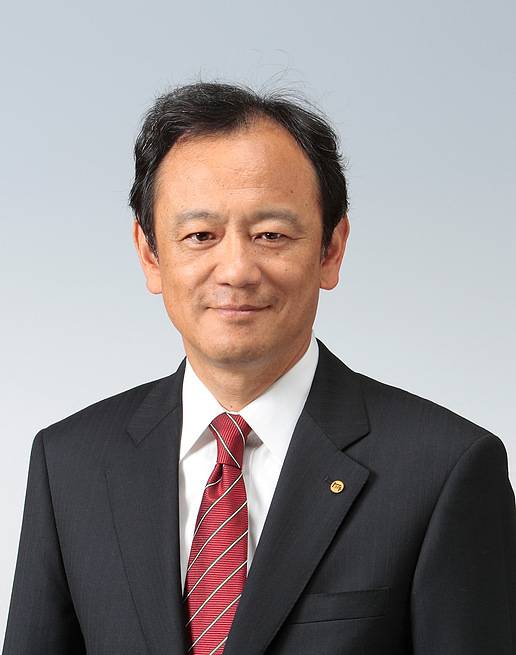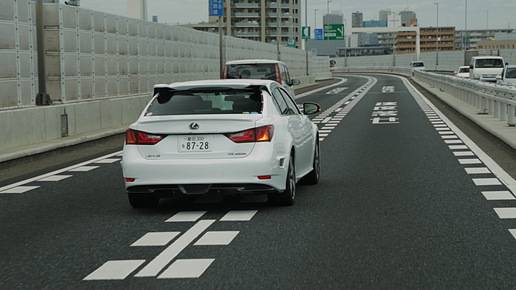 丰田认为,先进的即时路线图编制功能将有助于大幅降低交通事故发生率。
丰田认为,先进的即时路线图编制功能将有助于大幅降低交通事故发生率。 丰田首席安全技术官、先进研发与工程公司总裁伊势清贵称,“在自动驾驶方面,我们首先强调的是安全。”
丰田首席安全技术官、先进研发与工程公司总裁伊势清贵称,“在自动驾驶方面,我们首先强调的是安全。” 丰田正在寻求最有效的驾驶员警示或提醒方法,协助驾驶员及时在自动驾驶和手动操作之间进行“切换”,比如利用仪表板显示切换信息。
丰田正在寻求最有效的驾驶员警示或提醒方法,协助驾驶员及时在自动驾驶和手动操作之间进行“切换”,比如利用仪表板显示切换信息。 丰田的“公路驾驶伙伴”系统可自动执行包括变道在内的各种驾驶任务,驾驶员仅需在“非公路环境”或者“自己想开车”时控制车辆。
丰田的“公路驾驶伙伴”系统可自动执行包括变道在内的各种驾驶任务,驾驶员仅需在“非公路环境”或者“自己想开车”时控制车辆。
也许有人会认为,丰田汽车(Toyota)将“集中火力”研发自动驾驶技术,但事实上,这家日本最大的汽车制造商却一直在有意回避全自动驾驶的热浪。丰田首席安全技术官、先进研发与工程公司总裁 伊势清贵表示,在自动驾驶方面,丰田的动作“要比其他公司更加谨慎”。在丰田看来,自动驾驶的首要意义是提升安全,而非增加便利。
绝对不搞“自动驾驶车横跨全国之旅”
最近,伊势先在接受《汽车工程》的采访中表示,“在自动驾驶方面,我们首先强调的是安全,也就是创造一个更加安全的交通环境。”
相较于其他厂商风风火火的SAE 4级到5级全自动驾驶研发,伊势称丰田将主要专注于SAE 2级到3级之间的驾驶员辅助功能。这主要是为了极大地降低,甚至完全避免交通事故的发生;并在特定条件下,为驾驶员提供领航驾驶的选择。丰田曾在2015年提出“出行驾驶伙伴(Mobility Teammate)”的概念,也就是说自动驾驶系统将以伙伴的身份,配合驾驶员的驾驶。
伊势表示,丰田的目标在于促进“零车祸社会”的实现。他并未透露具体时间点,但也明确表示“宜早不宜迟”。
SAE 3级伙伴驾驶辅助技术
尽管许多汽车厂商和一级供应商均认为,最合理的做法是集中研发资源,跳过SAE 2级到3级的“方向盘脱手”自动驾驶系统,直接追求更高级别的自动驾驶功能。但伊势表示,为了尽快打造“更安全”的道路环境,丰田选择追求中级自动驾驶目标是最明智的。为了实现这一目标,过去20多年来,丰田一直在进行自动技术方面的研发,主要力量主要有三支:丰田研究所(Toyota Research Institute)、协同安全研究中心(Collaborative Safety Research Center),以及丰田互联公司(Toyota Connected,成立于2016年,为丰田的“大数据”中心)。
丰田的努力方向主要集中在复杂车载主动安全功能与系统、V2V和V2I通信以及自动驾驶技术的整合。举个例子,丰田曾许诺在2017年底前,为旗下几乎所有丰田和雷克萨斯产品线配备“安全感知(Safety Sense)”主动安全技术套装。该套装包括碰撞前预警/避免、行人监测、道路偏离协助、自动头灯控制,以及自适应性巡航控制等功能。
伊势表示,丰田计划将车载技术与V2I通信结合起来,从而极大地避免道路交叉口处的事故发生,要知道,此类交通事故所致的死亡人数占全美总数的四分之一。
丰田认为,公司的“出行驾驶伙伴”理念主要可以延伸至两个方向,分别为“公路驾驶伙伴”和“城市道路驾驶伙伴”。其中,“公路驾驶伙伴”旨在接管公路驾驶中“无趣”或“危险”的部分。举个例子,在准备进入州际公路时,驾驶员可以轻松按下开关,此时车辆就会进行自动并道与变道,还可自动控制车辆的油门和刹车;而当车辆驶离公路时,驾驶员则可以“重新接管”对车辆的控制,更多参与到车辆的驾驶之中。“公路驾驶伙伴”预计将于2020年左右在日本市场推出。
“城市道路驾驶伙伴”可在拥堵环境下为驾驶员提供自动驾驶服务,此时车内的行人监测/避让等主动安全系统将开始发挥作用。
根据丰田对“出行驾驶伙伴”的描述,“这种方法可以享受自动驾驶带来的实用性,但也同时能够为驾驶员保留驾驶本身的乐趣。”
人工智能将扮演更大角色
丰田认为,随着技术的进步,未来人工智能将发挥更大的作用,比如利用激光雷达和摄像头视觉生成超高精度的即时地图,这不仅可以服务于车辆本身,而且还能造福周边的道路使用者,或者即将使用道路的车辆和行人。
同时,丰田的安全高管认为,SAE 2级到3级自动驾驶系统并不存在“切换”方面的障碍。目前,公司正在寻求最有效的驾驶员警示或提醒方法,并希望能够实现接口的标准化。
伊势也承认,世界不同地区采用自动技术的步伐快慢有所不同。他表示, “城市道路驾驶伙伴”应用相较于美国市场,日本市场将更加关键。而由于美国的驾驶环境以郊区道路的长距离驾驶为主,而且事故中更多涉及到大型卡车,因此美国可能会更快采用SAE 4级到5级自动驾驶。
One might expect Japan’s largest automaker to be “all-in” on promoting autonomous-driving technology, but Toyota has rather conspicuously avoided self-driving hype. Instead, said Kiyotaka Ise, the company’s chief safety technology officer and President of its Advanced R&D and Engineering Company, Toyota is being “more cautious than others” because it sees the chief promise of autonomy to be enhanced safety rather than enhanced convenience.
Definitely a little tamer than cars driving themselves across the country.
“Our stress with autonomous is safety first, a safer traffic environment,” insisted Ise in a recent interview with Automotive Engineering.
Instead of focusing on the gee-whiz potential of SAE Level 4-5 fully-autonomous driving, Ise said Toyota instead is concentrating on the driver-assist possibilities of Levels 2-3: the potential to drastically reduce or even eliminate accidents altogether—while still providing the driver with the opportunity to enjoy piloting the vehicle under conditions of choice. The autonomous vehicle works with the driver in a “mobility teammate” collaboration, a strategic concept Toyota revealed in 2015.
Ise won’t commit to a timeframe, but he admitted Toyota’s goal is no less than “accident-free society.” But it’s clear he means sooner than later.
Level 3 Teammate
Although many automakers and Tier 1 suppliers say it’s most logical to direct development resources to achieving high-level autonomy, skipping the “handoff” complications of Level 2-3 systems, Ise said Toyota’s mid-level autonomy focus makes the most sense to more quickly produce safer roads. That’s the endgame to which the company has been directing more than 20 years of autonomous-technology research from three primary corporate R&D channels: the Toyota Research Institute, the Collaborative Safety Research Center and Toyota Connected (formed in early 2016 to be Toyota’s “big data” hub).
Toyota’s efforts are focused on integration of sophisticated onboard active-safety features and systems, vehicle-to-vehicle (V2V) and vehicle-to-infrastructure (V2I) communication and automated-driving technology. The company has pledged, for example, to have its “Safety Sense” active-safety technology suite (pre-collision alert/avoidance, pedestrian detection, lane-departure assist, automatic headlight high-beam control and adaptive cruise control) standard for nearly every vehicle in the Toyota and Lexus model lines by the end of 2017.
Combine the onboard technology, Ise said, with V2I communication and go after a big-time reduction in intersection accidents, which account for a quarter of all vehicle fatalities in the U.S.
Toyota sees the approach extending into two distinct paths for its Mobility Teammate philosophy, a “Highway Teammate” and an “Urban Teammate.” The highway teammate is targeted at taking over the mundane and riskier aspects of highway driving; flip a switch when preparing to enter an Interstate, say, and the system automatically merges the vehicle, accelerates and brakes and changes lanes. Leaving the highway, the driver resumes control for the presumably more-engaging (or more complex, depending on one’s perspective) aspects of the trip. Highway Teammate is targeted for introduction in Japan sometime around 2020.
The urban teammate seeks to deliver automated driving in more-congested environments, where active-safety systems such as pedestrian detection and avoidance come into play.
According to Toyota’s description of the Teammate strategy, “This approach acknowledges the utility of automated-driving technologies while maintaining the fun experience of driving itself.”
AI to assume a larger role
As technology advances, Toyota sees artificial intelligence assuming a larger role, using LiDAR and camera vision to generate, on-the-fly, ultra-precise maps for the vehicle, but also for others in the vicinity or scheduled to use that road.
Meantime, Toyota safety executives are not unaware of the development hurdles surrounding the driver handoff required for engaging and disengaging with Level 2-3 autonomous systems. They’re studying the most effective methods to alert and inform the driver and hope to standardize that interface.
Ise also acknowledges that different world regions will adopt autonomy at a different pace. In Japan, he said, the Urban Teammate concept is more critical than in the U.S., where more suburbanized driving, lengthy highway travel and more crashes with big trucks might suggest quicker adoption of Level 4-5 autonomy.
Author: Bill Visnic
Source: SAE Automotive Engineering Magazine
等级
打分
- 2分
- 4分
- 6分
- 8分
- 10分
平均分
- 作者:Bill Visnic
- 行业:汽车
- 主题:零部件安全性人体工程学/人因工程学电气电子与航空电子
